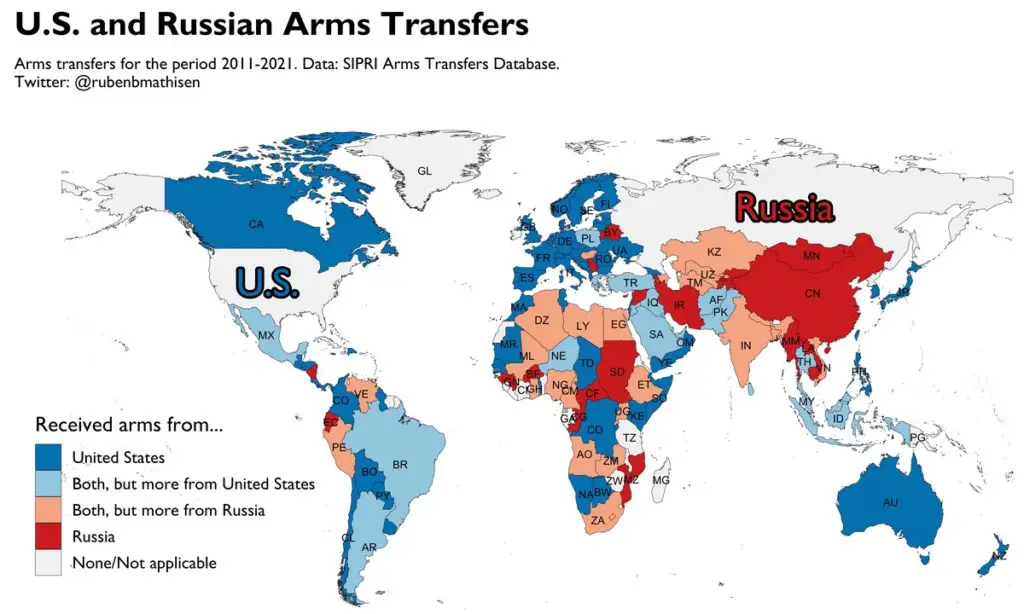United States and Russia Arms Transfers Mapped
The global arms trade is a high-stakes game of geopolitical chess, and the latest data reveals some intriguing moves on the board. According to the Stockholm International Peace Research Institute (SIPRI), the volume of major arms transfers from 2017-2021 dipped 4.6% compared to the previous five-year period. However, it’s still 3.9% higher than a decade ago, showing the enduring nature of this lucrative market.
Uncle Sam’s Arsenal Goes Global
The United States has cemented its position as the world’s arms dealer-in-chief, accounting for a whopping 39% of all major arms exports from 2017 to 2021. This marks a significant increase from its already impressive 32% share in the previous five-year period. To put this into perspective, the US now exports more than twice as many weapons as its closest competitor, Russia.
Russia: Still in the Game
Despite facing economic sanctions and increased competition, Russia managed to hold onto second place with 19% of the global market share. While this represents a decline from previous years, it demonstrates Russia’s continued influence in the international arms trade.
Who’s Buying?
The top five arms importers paint an interesting picture of global hotspots and emerging powers:
- India
- Saudi Arabia
- Egypt
- Australia
- China
These countries’ appetites for weapons reflect ongoing regional tensions, modernization efforts, and shifting alliances.
Regional Trends: Winners and Losers
The arms trade isn’t just about individual countries; it’s also about broader regional dynamics. Between 2012-2016 and 2017-2021, we saw some notable shifts:
- Europe: 19% increase (NATO expansion and Russian tensions)
- Middle East: 2.8% increase (ongoing conflicts and rivalries)
- Americas: 36% decrease
- Africa: 34% decrease
- Asia and Oceania: 4.7% decrease
The Big Picture
The map below offers a striking visual representation of US and Russian arms transfers over the past decade. It’s a stark reminder of how these two superpowers extend their influence far beyond their borders through the sale of military hardware.

What does this all mean? The arms trade is more than just a commercial enterprise; it’s a tool of foreign policy, a reflection of global alliances, and often a harbinger of future conflicts. As the US strengthens its grip on the market, questions arise about the long-term implications for global stability and the balance of power.
Keep an eye on this space – the next moves in this high-stakes game could reshape the world as we know it.
Interested in learning more about global politics and military strategy? Check out these related products, available on Amazon:
- The Art of War by Sun Tzu – A timeless classic on military strategy
- World Atlas – Understand the geography behind global conflicts
- Global Politics: A New Introduction – Dive deep into international relations
- Risk Board Game – A classic game of global domination








